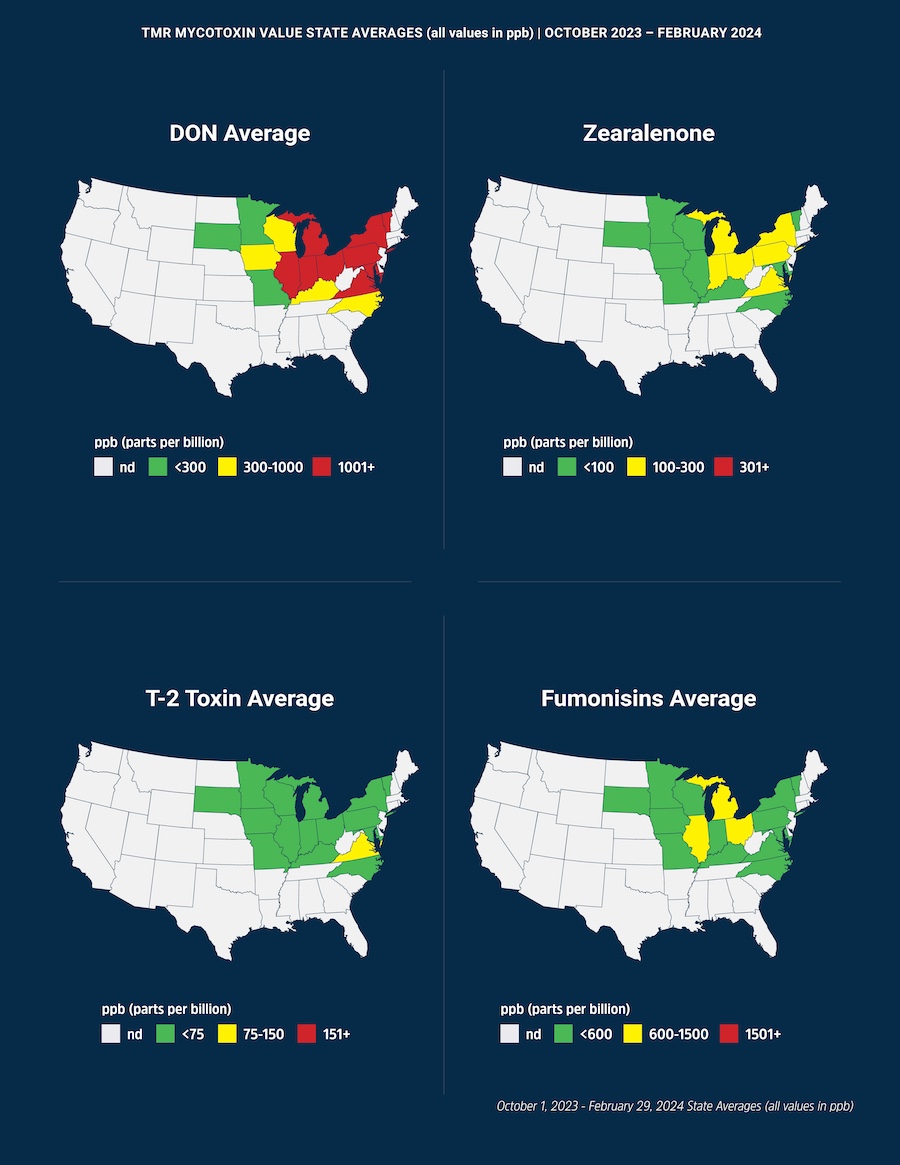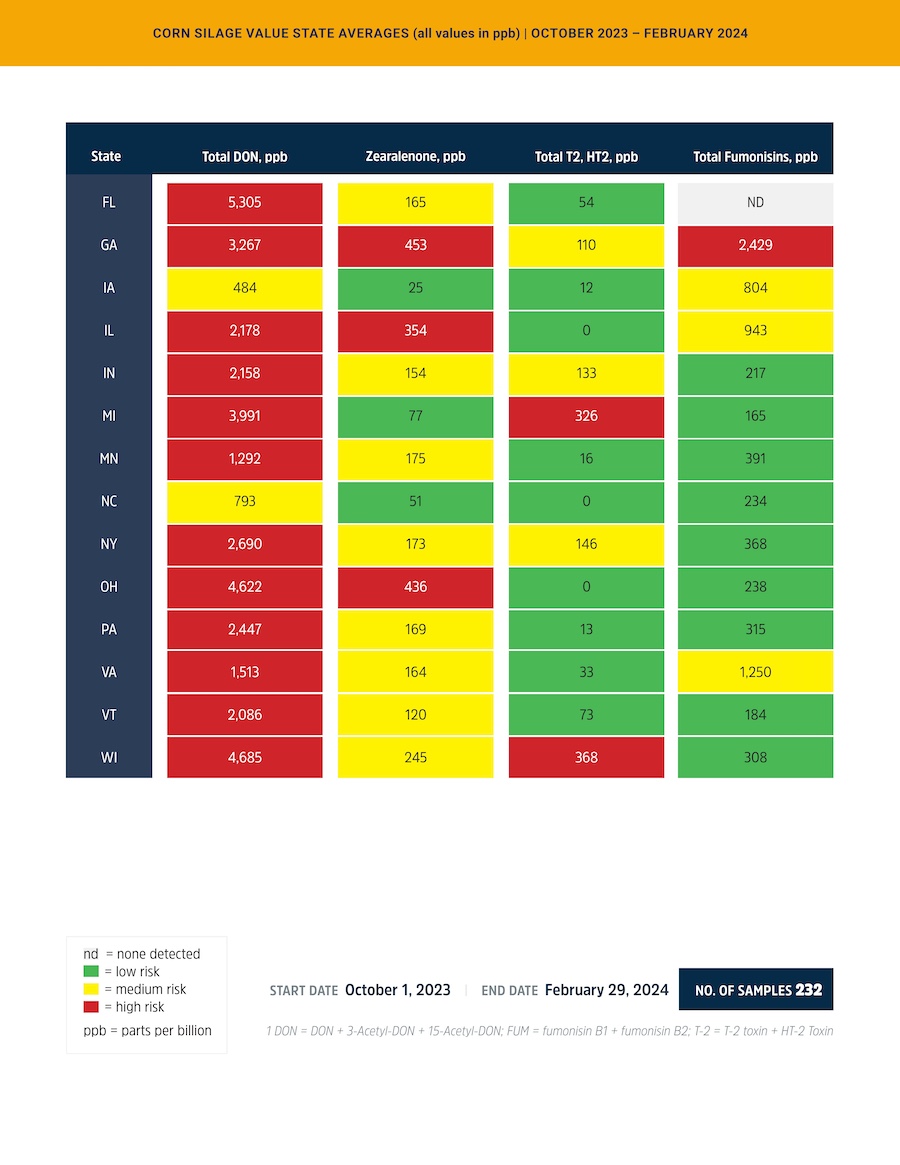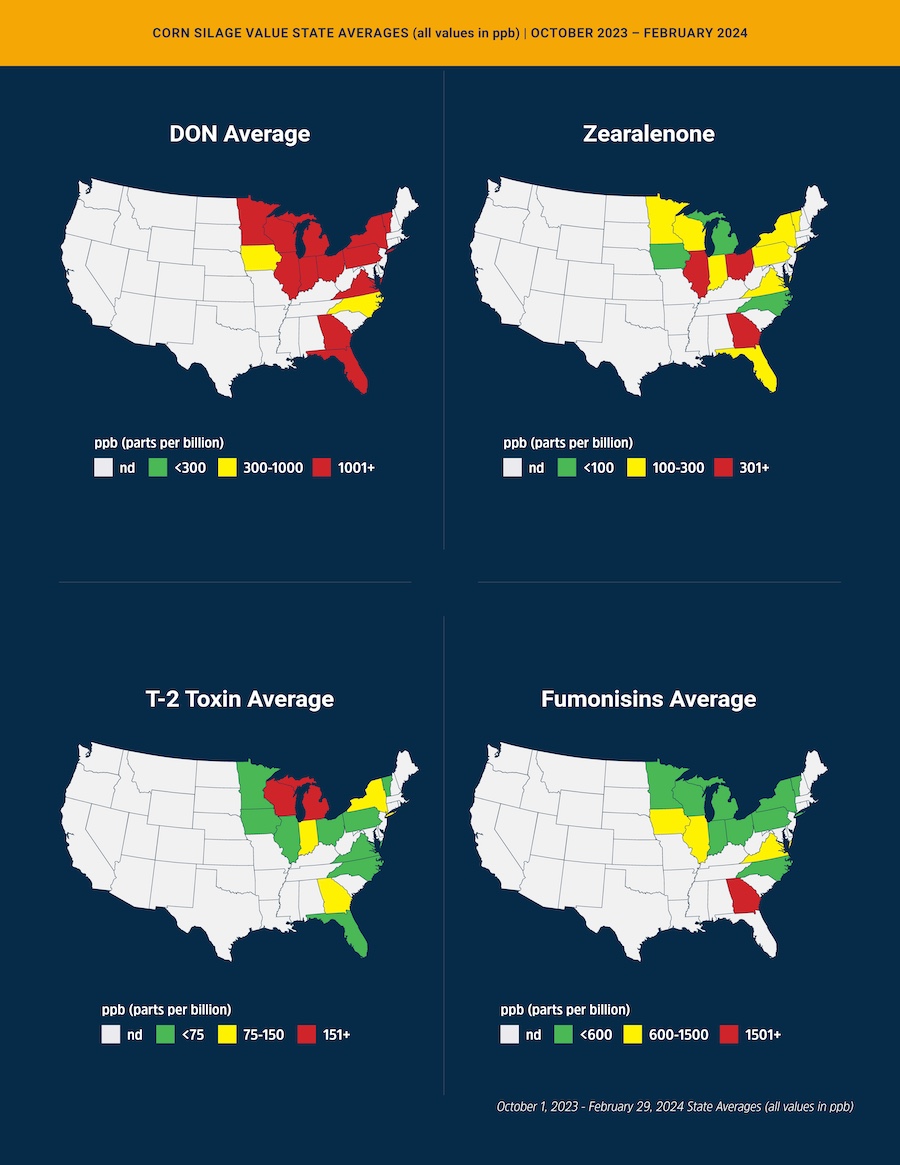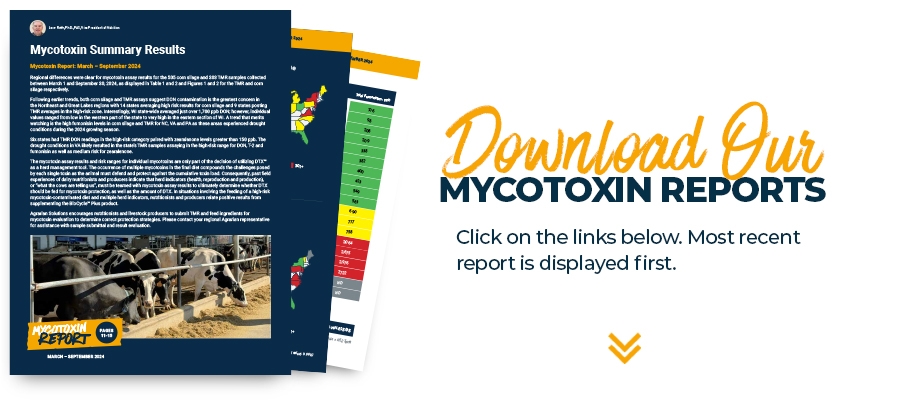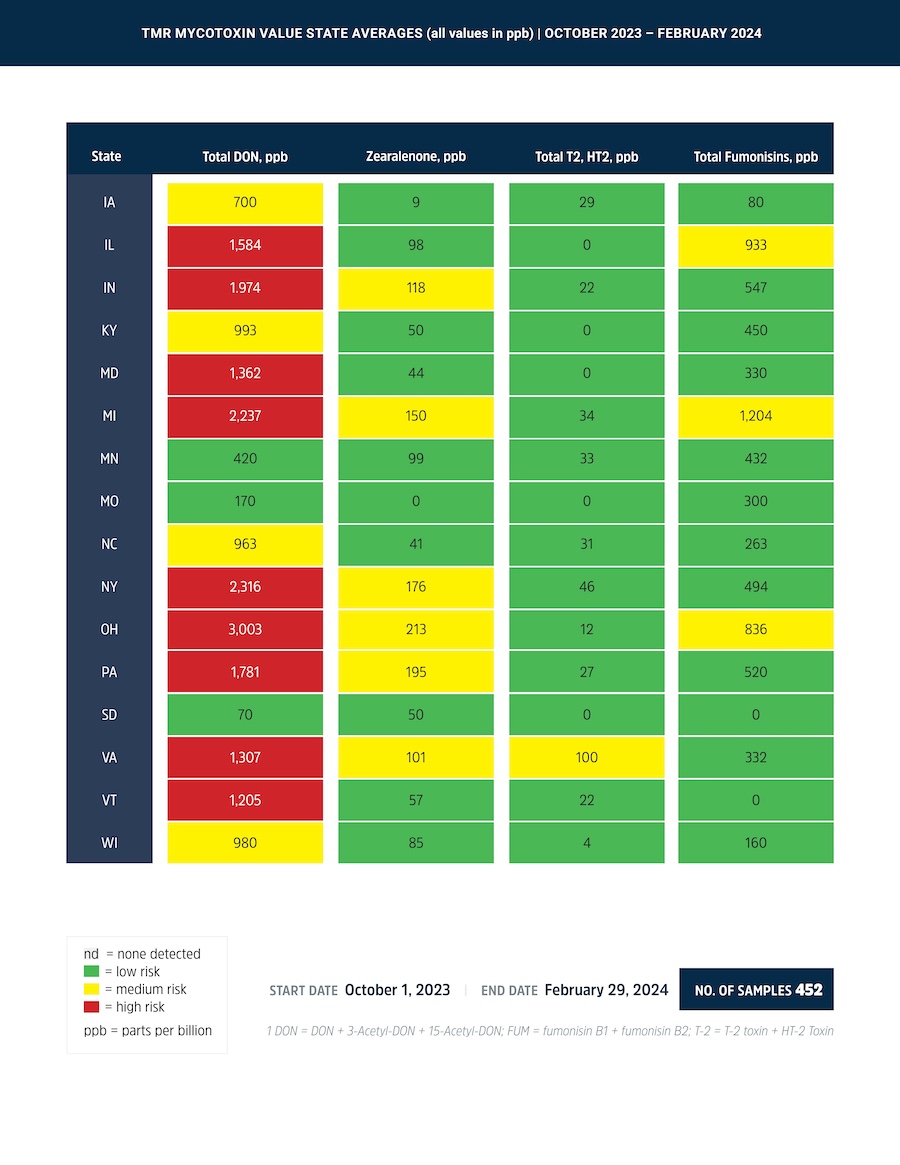Mycotoxin Summary Results
Larry Roth, Ph.D., PAS, Vice President of Nutrition
Mycotoxin assays of TMR and corn silage samples indicate regional variations in mycotoxin contamination levels across the US. The summary of the 452 TMR samples and 232 corn silage samples collected between October 1, 2023, and February 29, 2024 are displayed in Tables 1 and 2 and Figures 1 and 2 for TMR and corn silage, respectively.
Consistent with the past several years, the TMR assays suggest DON contamination is the greatest concern in the northeastern third of the country with nine states averaging high risk results and another three states almost making that list. Although state-wide WI TMR samples averaged 980 ppb DON, a wide range existed between extreme contamination in eastern WI near Lake Michigan and clean TMR samples in western WI next to the Mississippi River.
Zearalenone (ZEA) contamination averaged medium risk in only six states; however, each of those states were also high risk for DON, which compounds the negative effects of each individual mycotoxin. Interestingly, fumonisin contamination has been trending up over the last several years and TMR assays from IL, OH and MI averaged in the medium risk level during the sampling period.
Corn silage assay results continue to implicate this important feed ingredient as the major mycotoxin source. As previously mentioned for TMR samples, WI showed a tremendous east-to-west variation in DON contamination of corn silage, and in fact was the second-highest state for corn silage DON levels. Although the GA corn silage sampling was limited in scope, with only 9 submittals, the assays results averaged in the high-risk level for DON, ZEA, fumonisin and in the medium risk category for T-2. University research evaluating fungicides, application timing and hybrid susceptibility to mycotoxin contamination of corn silage should be closely followed.
Agrarian Solutions encourages nutritionists and livestock producers to submit TMR and feed ingredients for mycotoxin evaluation to determine correct protection strategies. Please contact your regional Agrarian representative for assistance with sample submittal and result evaluation.
